Sodium toluene-4-sulphinate
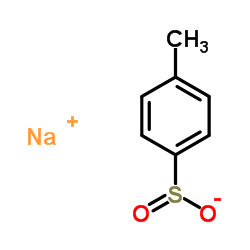
Sodium toluene-4-sulphinate structure
|
Common Name | Sodium toluene-4-sulphinate | ||
|---|---|---|---|---|
| CAS Number | 824-79-3 | Molecular Weight | 178.184 | |
| Density | N/A | Boiling Point | 340ºC at 760 mmHg | |
| Molecular Formula | C7H7NaO2S | Melting Point | >300 °C(lit.) | |
| MSDS | Chinese USA | Flash Point | 159.4ºC | |
| Name | Sodium p-Toluenesulfinate |
|---|---|
| Synonym | More Synonyms |
| Boiling Point | 340ºC at 760 mmHg |
|---|---|
| Melting Point | >300 °C(lit.) |
| Molecular Formula | C7H7NaO2S |
| Molecular Weight | 178.184 |
| Flash Point | 159.4ºC |
| Exact Mass | 178.006439 |
| PSA | 59.34000 |
| LogP | 2.09870 |
Synonym:Sodium 4-methylbenzenesulfinate; Sodium p-tolylsufinate Section 2 - COMPOSITION, INFORMATION ON INGREDIENTS
Risk Phrases: None Listed. Section 3 - HAZARDS IDENTIFICATION EMERGENCY OVERVIEW
The toxicological properties of this material have not been fully investigated. Potential Health Effects Eye: May cause eye irritation. Skin: May cause skin irritation. Ingestion: May cause irritation of the digestive tract. The toxicological properties of this substance have not been fully investigated. Inhalation: May cause respiratory tract irritation. The toxicological properties of this substance have not been fully investigated. Chronic: No information found. Section 4 - FIRST AID MEASURES Eyes: Flush eyes with plenty of water for at least 15 minutes, occasionally lifting the upper and lower eyelids. Get medical aid immediately. Skin: Get medical aid. Flush skin with plenty of water for at least 15 minutes while removing contaminated clothing and shoes. Wash clothing before reuse. Ingestion: If victim is conscious and alert, give 2-4 cupfuls of milk or water. Never give anything by mouth to an unconscious person. Get medical aid. Inhalation: Remove from exposure and move to fresh air immediately. If not breathing, give artificial respiration. If breathing is difficult, give oxygen. Get medical aid. Notes to Physician: Antidote: None reported. Section 5 - FIRE FIGHTING MEASURES General Information: As in any fire, wear a self-contained breathing apparatus in pressure-demand, MSHA/NIOSH (approved or equivalent), and full protective gear. During a fire, irritating and highly toxic gases may be generated by thermal decomposition or combustion. Extinguishing Media: Use water spray, dry chemical, carbon dioxide, or appropriate foam. Section 6 - ACCIDENTAL RELEASE MEASURES General Information: Use proper personal protective equipment as indicated in Section 8. Spills/Leaks: Clean up spills immediately, observing precautions in the Protective Equipment section. Sweep up or absorb material, then place into a suitable clean, dry, closed container for disposal. Avoid generating dusty conditions. Provide ventilation. Section 7 - HANDLING and STORAGE Handling: Wash thoroughly after handling. Remove contaminated clothing and wash before reuse. Use with adequate ventilation. Minimize dust generation and accumulation. Avoid contact with eyes, skin, and clothing. Keep container tightly closed. Avoid ingestion and inhalation. Storage: Keep container closed when not in use. Store in a tightly closed container. Store in a cool, dry, well-ventilated area away from incompatible substances. Section 8 - EXPOSURE CONTROLS, PERSONAL PROTECTION Engineering Controls: Use adequate ventilation to keep airborne concentrations low. Exposure Limits CAS# 824-79-3: Personal Protective Equipment Eyes: Wear appropriate protective eyeglasses or chemical safety goggles as described by OSHA's eye and face protection regulations in 29 CFR 1910.133 or European Standard EN166. Skin: Wear appropriate protective gloves to prevent skin exposure. Clothing: Wear appropriate protective clothing to prevent skin exposure. Respirators: Follow the OSHA respirator regulations found in 29 CFR 1910.134 or European Standard EN 149. Use a NIOSH/MSHA or European Standard EN 149 approved respirator if exposure limits are exceeded or if irritation or other symptoms are experienced. Section 9 - PHYSICAL AND CHEMICAL PROPERTIES Physical State: Crystalline powder Color: white Odor: None reported. pH: Not available. Vapor Pressure: Not available. Viscosity: Not available. Boiling Point: @ 760.00mm Hg Freezing/Melting Point: > 300 deg C Autoignition Temperature: Not applicable. Flash Point: Not available. Explosion Limits, lower: N/A Explosion Limits, upper: N/A Decomposition Temperature: Solubility in water: soluble Specific Gravity/Density: Molecular Formula: C7H7O2SNa.xH2O Molecular Weight: 178.18 Section 10 - STABILITY AND REACTIVITY Chemical Stability: Stable under normal temperatures and pressures. Conditions to Avoid: Incompatible materials, dust generation, strong oxidants. Incompatibilities with Other Materials: Oxidizing agents. Hazardous Decomposition Products: Carbon monoxide, oxides of sulfur, irritating and toxic fumes and gases, carbon dioxide. Hazardous Polymerization: Has not been reported. Section 11 - TOXICOLOGICAL INFORMATION RTECS#: CAS# 824-79-3: XT4725000 LD50/LC50: CAS# 824-79-3: Dermal, guinea pig: LD50 = >1 gm/kg. Carcinogenicity: p-Toluenesulfinic Acid, Sodium Salt - Not listed by ACGIH, IARC, or NTP. Other: See actual entry in RTECS for complete information. Section 12 - ECOLOGICAL INFORMATION Other No information available. Section 13 - DISPOSAL CONSIDERATIONS Dispose of in a manner consistent with federal, state, and local regulations. Section 14 - TRANSPORT INFORMATION IATA Not regulated as a hazardous material. IMO Not regulated as a hazardous material. RID/ADR Not regulated as a hazardous material. Section 15 - REGULATORY INFORMATION European/International Regulations European Labeling in Accordance with EC Directives Hazard Symbols: Not available. Risk Phrases: Safety Phrases: S 24/25 Avoid contact with skin and eyes. S 28A After contact with skin, wash immediately with plenty of water. S 37 Wear suitable gloves. S 45 In case of accident or if you feel unwell, seek medical advice immediately (show the label where possible). WGK (Water Danger/Protection) CAS# 824-79-3: 1 Canada CAS# 824-79-3 is listed on Canada's DSL List. CAS# 824-79-3 is not listed on Canada's Ingredient Disclosure List. US FEDERAL TSCA CAS# 824-79-3 is listed on the TSCA inventory. SECTION 16 - ADDITIONAL INFORMATION N/A |
CHEMICAL IDENTIFICATION
HEALTH HAZARD DATAACUTE TOXICITY DATA
|
| Personal Protective Equipment | Eyeshields;Gloves;type N95 (US);type P1 (EN143) respirator filter |
|---|---|
| Hazard Codes | Xi: Irritant; |
| Risk Phrases | R36/37/38 |
| Safety Phrases | S22-S24/25 |
| RIDADR | NONH for all modes of transport |
| WGK Germany | 2 |
| RTECS | XT4725000 |
| HS Code | 2930909090 |
| Precursor 10 | |
|---|---|
| DownStream 10 | |
| HS Code | 2930909090 |
|---|---|
| Summary | 2930909090. other organo-sulphur compounds. VAT:17.0%. Tax rebate rate:13.0%. . MFN tariff:6.5%. General tariff:30.0% |
|
Preparation, separation, and confirmation of the eight geometrical cis/trans conjugated linoleic acid isomers 8,10- through 11,13-18:2.
Lipids 34(8) , 873-7, (1999) Conjugated linoleic acid (CLA) mixtures were isomerized with p-toluenesulfinic acid or I2 catalyst. The resultant mixtures of the eight cis/trans geometric isomers of 8,10-, 9,11-, 10,12-, and 11,13-o... |
|
|
A comparison of dilute aqueous p-toluenesulfonic and sulfuric acid pretreatments and saccharification of corn stover at moderate temperatures and pressures.
Bioresour. Technol. 125 , 114-8, (2012) Single step pretreatment-saccharification of corn stover was investigated in aqueous p-toluenesulfonic and sulfuric acid media. Dilute aqueous solution of p-toluenesulfonic acid was a better catalyst ... |
|
|
Regioselective multi-component synthesis of 1H-pyrazolo[3,4-d]pyrimidine-6(7H)-thiones.
Mol. Divers. 16(3) , 591-600, (2012) A variety of pyrazolo[3,4-d]pyrimidine-6(7H)-thione derivatives were easily synthesized with a novel, simple, efficient, and regioselective method via three-component condensation reaction of 5-methyl... |
| Sodium 4-methylbenzenesulfinate |
| sodium,4-methylbenzenesulfinate |
| EINECS 212-538-5 |
| MFCD00013136 |
| Benzenesulfinic acid, 4-methyl-, sodium salt (1:1) |
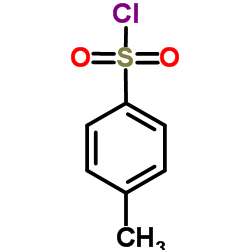 CAS#:98-59-9
CAS#:98-59-9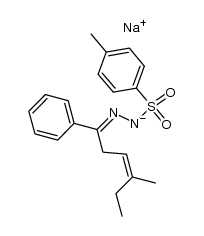 CAS#:100189-02-4
CAS#:100189-02-4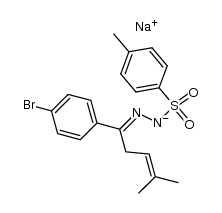 CAS#:100189-04-6
CAS#:100189-04-6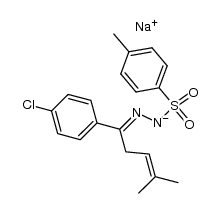 CAS#:100189-05-7
CAS#:100189-05-7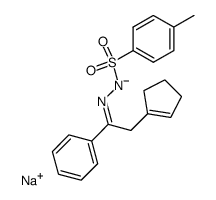 CAS#:73594-32-8
CAS#:73594-32-8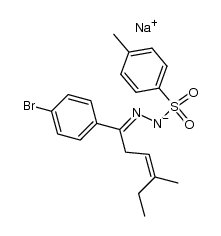 CAS#:100189-03-5
CAS#:100189-03-5 CAS#:100188-83-8
CAS#:100188-83-8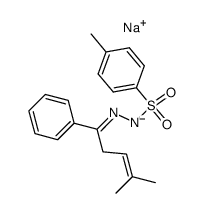 CAS#:84066-53-5
CAS#:84066-53-5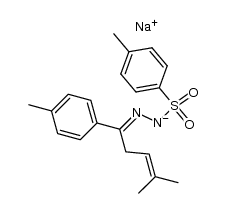 CAS#:100189-06-8
CAS#:100189-06-8 CAS#:100189-07-9
CAS#:100189-07-9![1-[(E)-but-1-enyl]sulfonyl-4-methyl-benzene structure](https://image.chemsrc.com/caspic/231/111895-49-9.png) CAS#:111895-49-9
CAS#:111895-49-9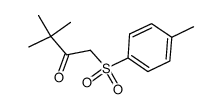 CAS#:101268-22-8
CAS#:101268-22-8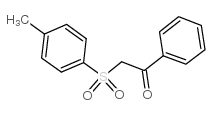 CAS#:31378-03-7
CAS#:31378-03-7![Benzene,1-methyl-4-[[(1E)-2-phenylethenyl]sulfonyl]- structure](https://image.chemsrc.com/caspic/319/16212-08-1.png) CAS#:16212-08-1
CAS#:16212-08-1 CAS#:5335-87-5
CAS#:5335-87-5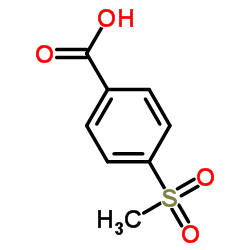 CAS#:4052-30-6
CAS#:4052-30-6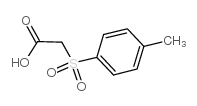 CAS#:3937-96-0
CAS#:3937-96-0 CAS#:3185-99-7
CAS#:3185-99-7 CAS#:3866-79-3
CAS#:3866-79-3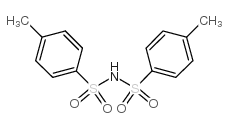 CAS#:3695-00-9
CAS#:3695-00-9
